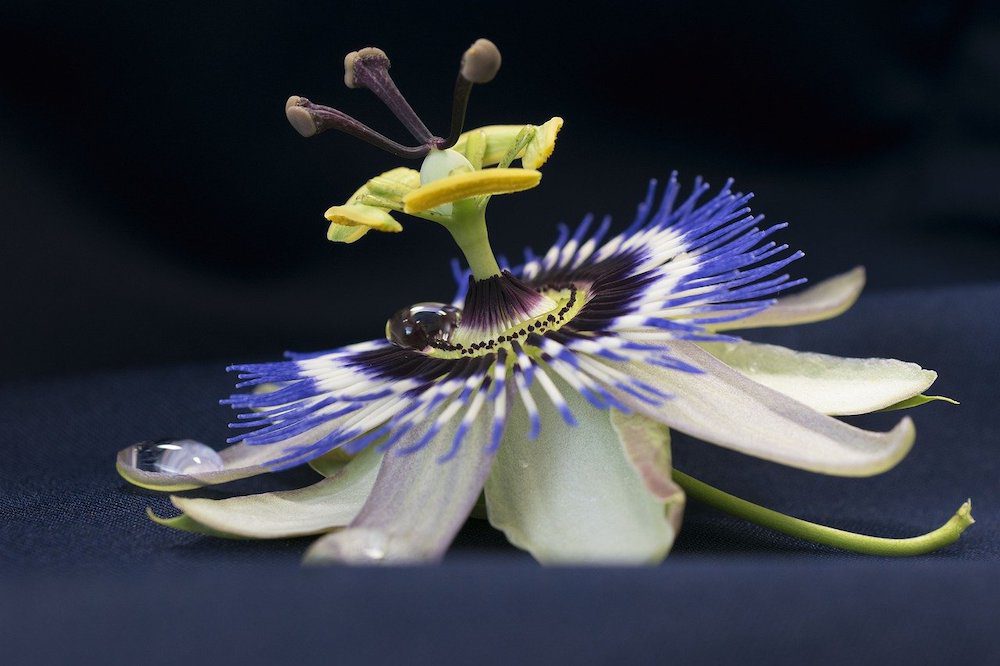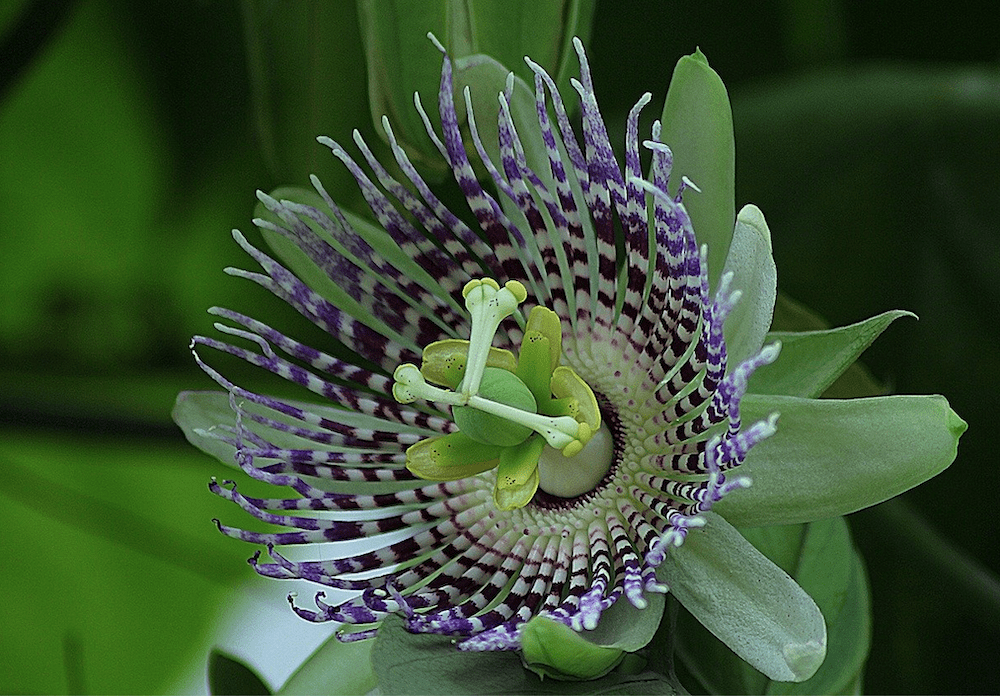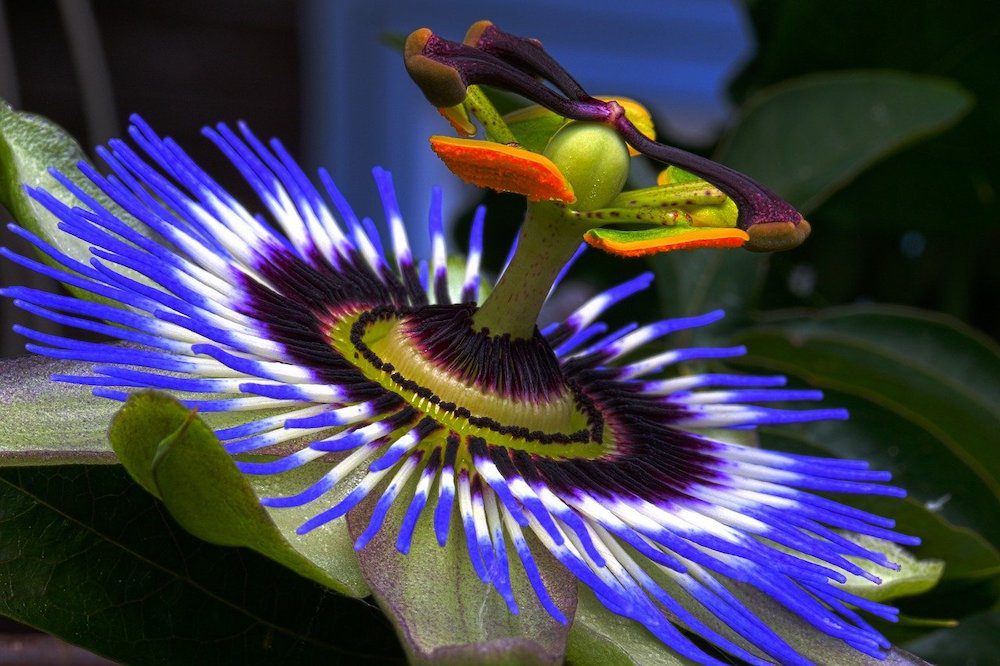Passion Flower Teaches Us Life is Beautiful and Complicated
By Jill Brooke

As Elizabeth Bernstein writes, “nature provokes awe – that emotional response to something vast that expands and challenges the way we see the world.”
There is nothing that makes me feel that sentiment more than looking at passion flowers.
The intricacy of their web-like construction seems to be telling the world that life is complicated but beautiful. After all, flowers have survived harsh years, happy years – yet mysteriously but confidently survive. Even when stepped on, flowers grow, trusting their inner beauty and resilience. As Bernstein wisely notes, nature teaches us to take the long view.
I find that both comforting and beautiful, like this flower. Don’t you?
The passion flower’s history reflects those sentiments as well.
Discovered by a Spanish doctor in Peru in 1569, the flower migrated to Europe 40 years later and became a popular sensation for its complicated arrangement of branches and medicinal properties.
Over time, it was popularized in American homeopathy as a sedative. Yes, it had a calming effect on people. Not only physically, where the flowers’ jutting threads conveyed a sense of order, but internally too. During World War 1, it was used as a nerve sedative to treat shell shock.

Spiritually the flowers also have a significant history.
The Anglicized name, “passion” flower refers to the Crucifixion of Jesus Christ.
As Maureen Katemopoulos wrote, Roman Catholic priests named the flower for the Passion of Jesus Christ and it was seen as a symbolic teaching tool to convert the native Indians of Peru to Christianity.
In his 1633 book, De florum cultura, Jesuit Ferrari saw connections between the flower and Jesus Christ. To him, the ovaries on a stalk represented the chalice, the five stamens the five wounds, and the stemmed ovary the cup while the corona at the center of the flower resembled the Crown of Thorns.
Others noted how the flower’s five petals and five petallike sepals represented the 10 apostles – minus Peter and Judas -who remained faithful to Jesus throughout the Passion.
Its Latin name is also meant to convey reincarnation after a struggle.
Which is a nice way to look at the 400 species of this flower – which grows in India, Florida and South America.

Jill Brooke is a former CNN correspondent, Post columnist and editor-in-chief of Avenue and Travel Savvy magazine. She is an author and the editorial director of FPD and floral editor for aspire design and home magazine
Photo Credit: Pixabay
